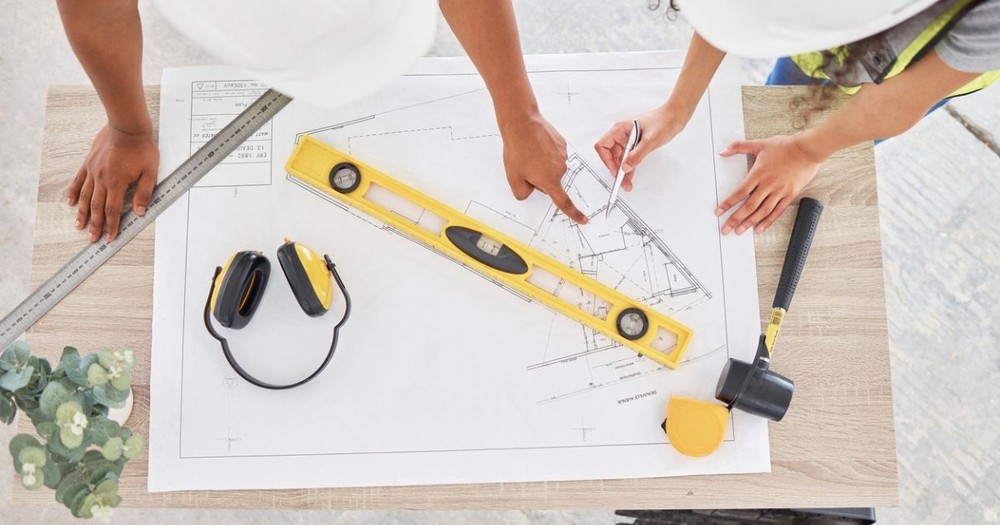
For those working as land surveyors in the United States, measuring a foot has just changed. As a part of the National Oceanic and Atmospheric Administration’s (NOAA) modernization of the National Spatial Reference System, the NOAA and the National Institute of Standards and Technology (NIST) have officially discontinued the use of the US survey foot.
As of this new year, surveyors will need to instead opt to use the more standardized international foot, with the exception of historical and legacy applications. The deprecation of the US survey foot should aid in the consistent conversion of US survey feet to international feet, creating national uniformity and potentially avoiding costly mistakes that would result in the continued use of the survey foot.

First defined in the Metric Law of 1866, the measurement for a meter was specified to be equal to 39.37 inches. Beginning in 1893, the US defined the length of a yard, as well as including a definition of the US survey foot, in “Fundamental Standards of Length and Mass.” The yard was defined as exactly 3600/3937, and as a third of a yard, the US survey foot was stated to be exactly 1200/3937 meters.
In 1959, the US, in collaborative action with other countries tried to come to more uniform standards with “Refinement of Values for the Yard and the Pound.” This new document from the National Bureau of Standards redefined a yard to be exactly .9144 meters, and a foot equal to exactly .3048 meters.
While this new definition was accepted internationally, it was accepted that measurements taken through geodetic surveying would continue to work with the measurement of a foot being maintained as it was defined in 1983. Thus, the length of a US survey foot is defined as 1200/3937 meters. In comparison, the international foot is equivalent to .999998 US survey feet, a difference of two parts per million (2 ppm).
With such a minuscule difference between the two defined measurements, it often amounts to no issue at all, as most practical applications would not include measuring distances large enough that the difference comes into play. With that said, larger-scale data collection is significantly impeded by the difference, especially as confusing the two measurements is an easy mix-up to make.

While the discrepancy between the two different measurements of a foot can be minuscule at times, there are many ways that the differences can cause errors when trying to find the relationship between measurements used internationally versus those done using US survey feet.
In a document on the Deprecation of the US Survey Foot by the NIST, NOAA, National Geodetic Survey, National Ocean Survey, and Department of commerce, public comment was requested in regard to the changes to the measuring system. In response, some individuals submitted responses describing cases in which having two feet caused errors and costs.
These examples included cases in which using two different units had led to significant amounts of time being spent to sort out discrepancies due to confusion or deviations in survey results, as well as added project costs in construction cases. In other cases, errors were caused when trying to lay state plane coordinates, over global aerial images or mapping systems that are based on the international foot. While the State Plane Coordinate System is based on meters, local agencies which need to work with the survey foot will convert measurements, leading to these differences.
The difference in the two-foot measurements is small, but when applied on a larger scale, these large coordinate values potentially set what should be the same points miles apart.
If you were to take one coordinate and apply at one time the international foot, and then another time the US survey foot, the resulting difference would be 2 feet in the northing and 6 feet in the easting. In technical applications that involve far more than one point on a map, this difference can be far more major.
In the same vein, issues reported also included cases in which confusion was caused when communication between agencies located in areas with different legislation regarding the foot. In cases such as the one stated, confusion due to the difference comes up when workers in a state which has adopted the international foot need to communicate with federal agencies which still work using the US survey foot.
Other engineering professionals faced added time and headache as they needed to convert their work, which is usually done in meters, into survey feet to be able to use the National Spatial Reference System (NSRS). As of December 31, 2023, the NSRS is to have been updated to use the international foot by the National Geodetic Survey.
Some of the received public comments opposed the retirement of the US survey foot, most citing the legacy applications using the survey foot. Others stated concerns that the change was a step towards adopting the metric system.
Overall, the majority of the commentary appeared to be in support of the conversion to the use of the international foot, happy to be rid of unnecessary and common confusion. While the everyday usage of the survey foot leads to hardly any discrepancies with the international foot, projects, and applications that involve larger coordinate values are far more likely to face issues.
Ultimately, the deprecation of the US survey foot has proceeded, with rebuttals stating that the survey foot will still be used in historic and legacy applications. Other counterpoints stated that moving forward with a uniform definition will allow survey operations to proceed with fewer errors, which are common and costly, in an orderly fashion.

In the process of transitioning to having the international foot, .3048 meters, become the uniform definition in the US, the National Institute and NOAA have also made recommendations for future applications.
Recommendations include early adoption, as making the changes now will help in avoiding issues down the line, as well as being more careful in documenting which unit was used in particular technical applications. The NIST and NOAA also offer resources for updating state and local legislation in the conversion to the international foot, as well as guidance on updating software to ensure the updated definitions are used in any new CAD file.
Hopefully, with the switch to the use of the international foot, errors and issues in surveying and all other industries which have to face the discrepancies will abate, and a uniform measurement will make communication with different governments and agencies simpler.
For the best resources and tips on surveying, construction, and protective equipment, you are in the right place. Baseline Equipment offers the best in informational materials as well as survey equipment, PPE, measuring tools, and more.